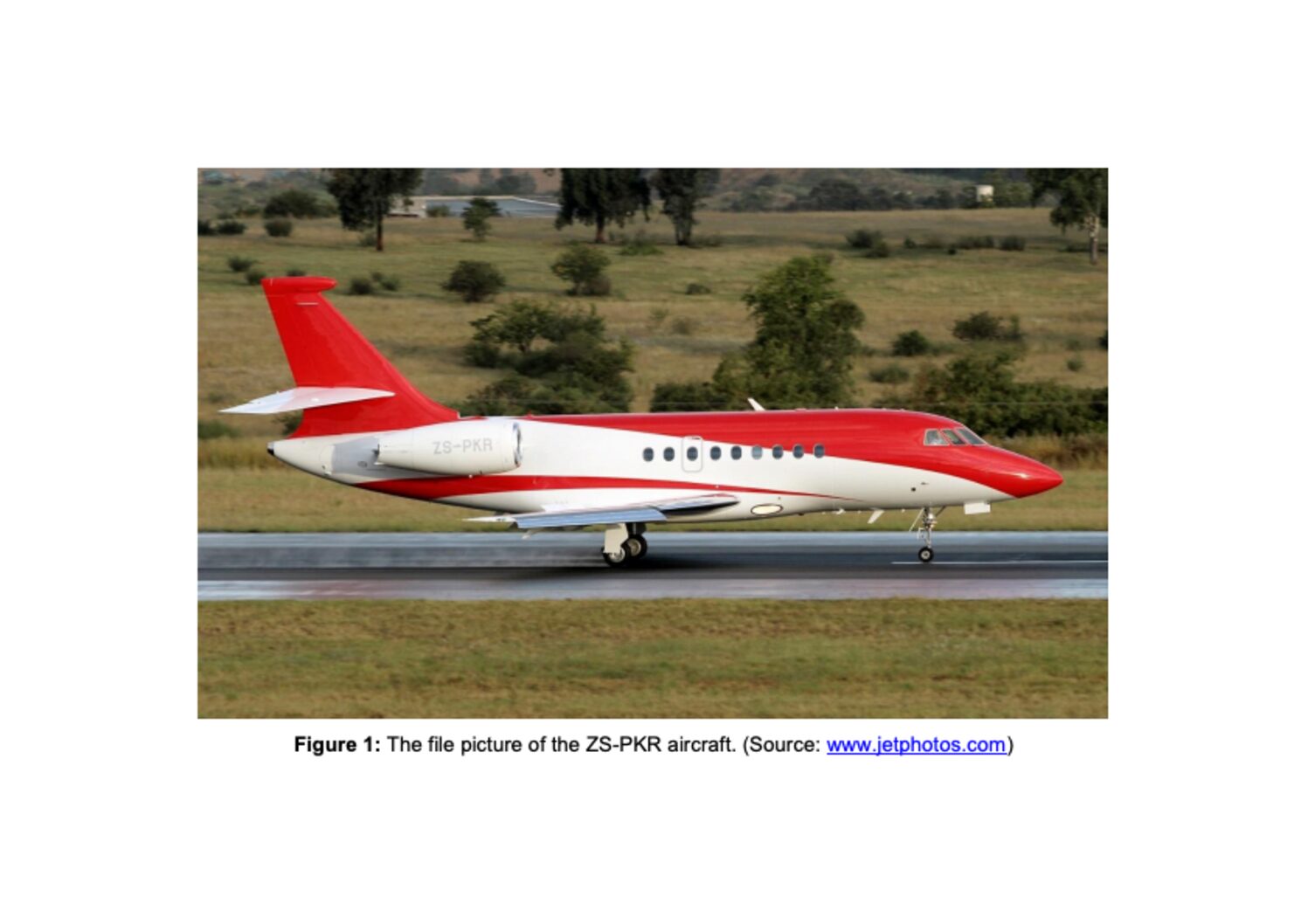20 September 2022 – 1435Z – Pietermaritzburg Airport (FAPM)
“Two pilots and nine passengers on-board a Falcon 2000 aircraft with registration ZS-PKR took off on a non-scheduled domestic flight from Pietermaritzburg Airport (FAPM) in KwaZulu-Natal province with the intention to land at King Shaka International Airport (FALE), also in KwaZulu-Natal province. An instrument flight rules (IFR) plan was filed for this flight, which was conducted in instrument meteorological conditions by day. The flight was also conducted under the provisions of Part 93 of the Civil Aviation Regulations (CAR) 2011 as amended. Clear weather conditions prevailed at the time of the flight.
The take-off weight was calculated to be 13 403 kilograms (kg) (29 550 pounds [lbs]). The maximum take-off weight (MTOW) for this aircraft is 16 238kg (35 798 lbs). The required computed take-off distance was 1 241 metres (m) (4 073 feet [ft]). Runway 16 at FAPM is 1 537m (5 043 ft) long. The V-speed was calculated with V1 (maximum speed at take-off at which the pilot must take the first action) at 111 knots (kts), rotation speed (Vr) at 115 kts, and V2 (take-off safety speed) at 118 kts, whilst the threshold speed (Vt) was at 128 kts.
The first part of the take-off roll was uneventful. At a speed of approximately 90-95 kts a bird, likely to be a Spur Winged Goose, was seen getting airborne from the right-side of the runway that was overgrown with grass (the PIC estimated the grass length to be approximately 15-20 centimetres in height). A moment later, the crew heard a loud thud from the right-side of the aircraft, which caused the aircraft to vibrate and subsequently veer off to the right-side of the runway centreline. The PF immediately called for a rejected take-off (RTO). He retarded both throttle levers and applied maximum brakes to stop the
aircraft on the remaining runway surface. The PM extended the airbrakes whilst notifying the tower about the RTO. After the aircraft came to a stop, the crew checked the engine parameters and it was noted that the number 2 engine fuel flow indicated zero.
Following the RTO, the crash alarm was activated by the ATC and two Aerodrome Rescue and Firefighting (ARFF) trucks dispatched to the scene. Once it was confirmed that the area around the aircraft was safe, the passengers disembarked unassisted via the main cabin door. There were no injuries recorded. The aircraft was taxied to the apron with the remaining operative engine.”
Source
Accident and Incident Investigations Division
South African Civil Aviation Authority
Republic of South Africa
https://caasanwebsitestorage.blob.core.windows.net/latestaccidentreports/ZS-PKR_Non-Fatal_10228_Limited%20Report_06022023.pdf
